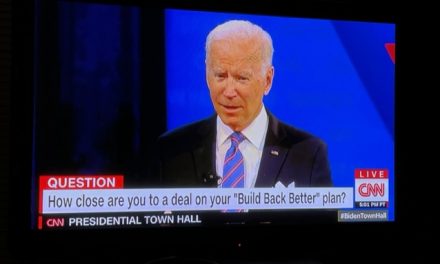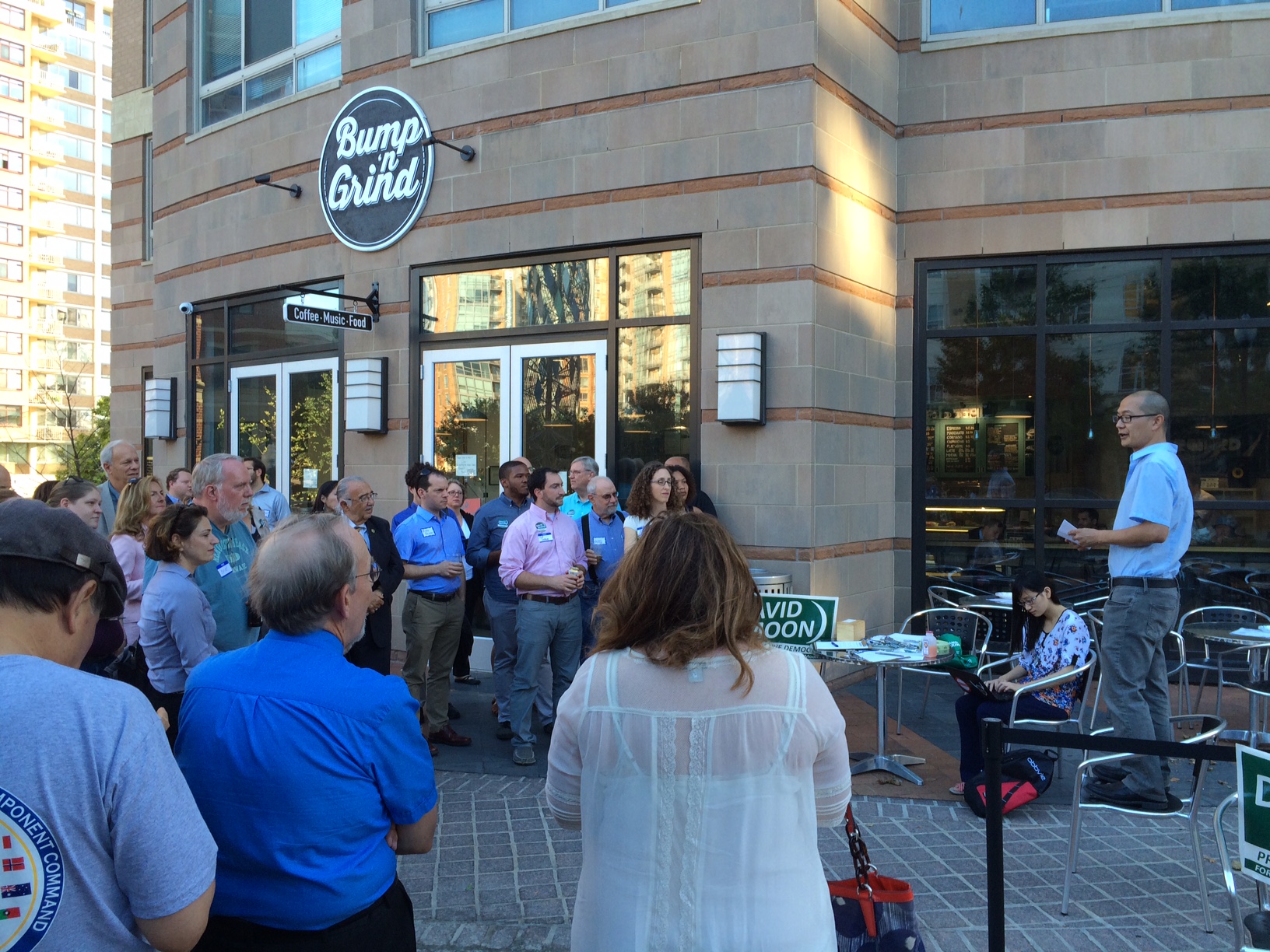By Megan Poinski
Megan@MarylandReporter.com
 Seventy-five years ago, a group of Maryland cities got together to try to make sure that President Franklin Roosevelt did not ignore them when using New Deal funds to bail the nation out of the Great Depression.
Seventy-five years ago, a group of Maryland cities got together to try to make sure that President Franklin Roosevelt did not ignore them when using New Deal funds to bail the nation out of the Great Depression.
That group became the Maryland Municipal League, which is still going strong today. The group today works to strengthen and support municipal government — a completely optional level of government — through advocacy and leadership.
Today, there are 157 incorporated cities and towns that are spread between most of Maryland’s 23 counties. (Baltimore City acts as its own county, and there are no municipalities in Howard or Baltimore counties.)
“Cities and towns provide basic grassroots meat and potatoes services,” said Scott Hancock, executive director of the Maryland Municipal League.
But counties provide those services — like water and sewer, emergency responders, trash and recycling pickup, and parks and recreation — too. According to Maryland Association of Counties Executive Director Michael Sanderson, the majority of Marylanders don’t live in cities and towns, and receive infrastructure services from county governments.
And while there is no stampede to form new towns – the state’s newest municipalities, North Chevy Chase and Martin’s Additions, are close to 20 years old – municipalities and counties are both still co-existing, evolving, and working together.
“There are some things that are works in progress … but the channels of communication are very much open,” said Scott Ullery, the Rockville city manager.
Municipalities came first
Although counties have most of the governmental power in the state, municipalities came first. The state’s oldest city, Annapolis, was chartered in 1634. It was incorporated in 1708.
And though municipalities are not the main form of local government in the state, Hancock said he knows of only one municipality that gave up its charter: Ellicott City in 1936.
Through the years, Hancock said, county government became the dominant governmental level. Hancock said he thinks the state might just find it’s easier that way. There are over six times more municipalities than counties. Plus, everyone lives in a county. Not everyone lives in a municipality.
Some large, populated areas – like Columbia in Howard County, Towson in Baltimore County, and Silver Spring in Montgomery County – often act like cities, but are unincorporated and ultimately ruled by county government.
Counties and municipalities both provide infrastructure services to residents. What each one does tends to be outlined in the city or county charter, which puts forth how the local government is going to operate. And cities and counties often provide the same kinds of services, like police protection or water.
“The devil can be in the details,” Sanderson said.
What counties do
Counties have many responsibilities, including providing residents with emergency protective services, and water and sewage solutions. They are responsible for zoning. If they have the ability from the state, counties can regulate things like transportation, taxes, and construction.
In Maryland, county governments are responsible for public schools. This is a function that cannot be given to a municipal government, and it means that the state has just 24 public school districts. Counties also have local health departments.
“County governments really are the full-service local governments for most Maryland residents,” Sanderson said.
The reach, structure, players and function of county government varies, depending on the county and its charter. Montgomery County can create special taxation districts – meaning that only people who live in certain areas of the county have to pay a certain tax. This is similar to a municipal tax because it has to do with specific services provided in one area.
Counties also play a role in the formation of municipal governments: they can ultimately veto a new municipality.
What municipalities do
Municipalities have more local governance than counties. While counties are large, municipalities need to have defined sizes. People who run the municipality are chosen from inside its borders. Municipality residents have more of a chance of knowing who is running the town, and municipal leaders have fewer constituents.
Some municipalities are historic cities in Maryland with traditional downtown areas, like Salisbury or Cambridge. But that is not a requirement.
“It’s the whole concept of self-governance,” said Hancock. “You aren’t going to rely on the county government to do it. You do it yourself.”
By virtue of their incorporations, each municipality has the right to provide local services to residents – like trash pickup, water lines, and policing. Hancock said that some municipalities don’t provide any services, but most do.
Unlike counties, geographic boundaries for municipalities are not already drawn, and there is not a de facto form of government in place for municipalities. In order to become a municipality, people in an area must go through complex process that includes petitioning, drafting a potential charter, putting together a financing plan, drawing maps, and receiving the blessing of the local county government.
Hancock said that the municipal league meets with areas that are interested in becoming municipalities to go over the process, but does not necessarily push the creation of new municipalities. In the recent past, the league has had several meetings with people from Columbia, but nothing further has happened.
Where both intersect
With both states and counties trying to control the same services, there is quite a lot of overlap. This means that exceptions, districts, and jurisdictions need to be hammered out between the two entities.
“We don’t always agree, but we agree on more things than we disagree on,” said Sidney Katz, the mayor of Gaithersburg in Montgomery County. Katz has been a municipal officer in the city since 1978, and has been mayor since 1998. He’s a former Municipal League president.
Katz said that as Maryland Municipal League president, he tried to ensure that all of the different governments communicated and worked together. Communication is vital, he said.
Cambridge Mayor Victoria Jackson-Stanley said that Dorchester County and the city have a good working relationship. They meet once a month over dinner to discuss what’s going on.
“We have a working relationship that is working,” she said.
Jackson-Stanley took office three years ago. She had not served in local or county government positions before, and said that the county has been very helpful. A new tech park in the city limits is a joint venture between the city and county that predates Jackson-Stanley’s time in office. She said she is glad to work with the county on that venture, and they have been helpful in letting her know what is needed for the project.
Ullery, a professional manager who serves at the pleasure of the Rockville council and mayor, has had his position since 2004. He said that Rockville and Montgomery County work well together — though there are some details that are negotiated by both parties. Rockville provides many of its own infrastructure services, including a city police force. However, he said, the city and county have a shared police jurisdiction. Rockville Police respond to about 70% of the calls, while Montgomery County Police respond to the other 30%.
“That is because of the high level of service that the city wants,” Ullery said.
Because many of the services the city provides are also provided by the county, and Rockville residents pay taxes to both the city and the county, Ullery said that the city gets a tax reimbursement. Negotiations on how much is reimbursed are ongoing, but Ullery said that communications are very open.
As the seat of Montgomery County, Rockville and the county government have many things in common. Ullery said that the two entities have worked seamlessly in times of natural disasters, and both city and county council members have made it a point to attend each others’ meetings.
“It all comes down to communication,” Ullery said.
Sanderson said the biggest challenge yet faces both municipal and county governments. With the state cutting back on funds – especially for infrastructure like roads and bridges – all of the local governments are going to have to bear the costs of keeping them in working order. Sanderson said that if the local governments band together, they could have more of an influence on Annapolis. If not, he said, there could be wide local disparities on infrastructure condition and taxes.
“The citizens are looking for us to work together and do a good job,” Sanderson said. “The big picture is that we are all working for the people.”







Recent Comments